Changdeokgung Palace was built in the 5th year of King Taejong (1405) as a second palace of Gyeongbokgung Palace, the main palace. Located to the east of Gyeongbokgung Palace, it was called the East Palace along with Changgyeonggung Palace.
It was all burnt down during the Imjin War(Japanese Invasion), but was rebuilt during the reign of King Gwanghaegun. It served as the main palace until Gyeongbokgung Palace was rebuilt during the reign of King Gojong, and it was the palace where kings lived for the longest period of time among the palaces of Joseon.
Changgyeonggung Palace was built right next to Seongjongdae to provide a comfortable space for the royal family at Changdeokgung Palace. Usually, when you say you are visiting the palaces, you are told to visit Changdeokgung Palace and Changgyeonggung Palace together.
Hanyang in the Joseon Dynasty was a walled city surrounded by large walls, and within it were the major palaces of the Joseon Dynasty, including Gyeongbokgung Palace, Changdeokgung Palace, Changgyeonggung Palace, Gyeonghuigung Palace, Gyeongungung Palace (Deoksugung Palace) and Jongmyo Shrine. Today, this location is within the so-called four main gates in Seoul.
Even in the Joseon Dynasty, as Seoul expanded, there were residences outside the four gates, but in reality, as Jeong Yak-yong (1762-1863) told his children, the inside of the four gates was the core area of the Joseon Dynasty.
"No matter what happens, do not move outside the four gates and endure. The moment you step outside the four gates, the opportunity disappears."
I entered Changdeokgung Palace through Donhwamun Gate. You can visit Changgyeonggung Palace and enter through Hamyangmun Gate.

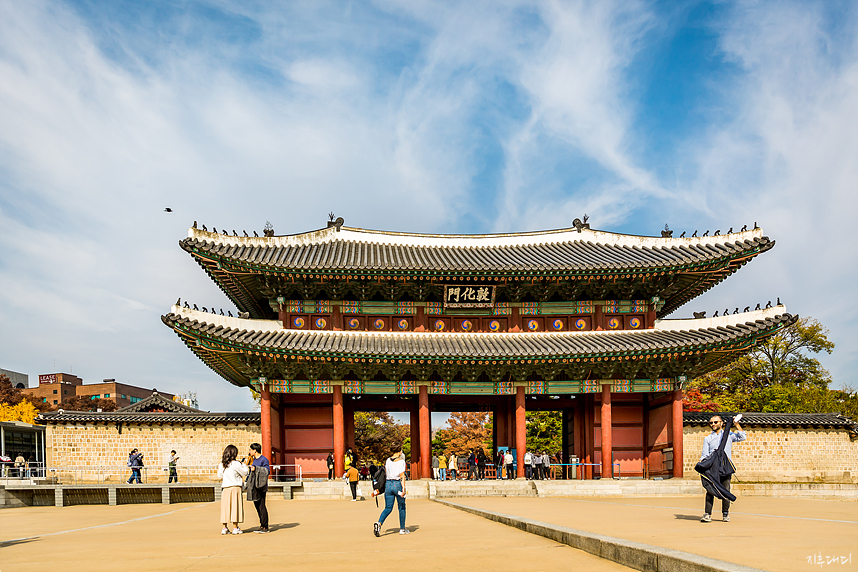

After entering and walking a little, you will see the Changdeokgung World Heritage Monument in front.
Ch'angdeokgung Palace World Heritage
Ch'angdeokgung Palace was registered on the UNESCO World Cultural Heritage List under the provisions of the conversation concerning the Protection of the World Cultural and Natural Heritage on December 6 1997.
World Heritage refers to cultural heritage that has outstanding universal value and must be protected for the sake of all mankind. The registration of Changdeokgung Palace as a World Heritage means that its value has been internationally recognized as a cultural heritage of mankind.
Built as a secondary palace to Gyeongbokgung Palace in the 8th year of Taejung, the 3rd king of Joseon (1405), Changdeokgung Palace is a traditional architecture of the Joseon Dynasty. It is considered one of the representative traditional gardens.
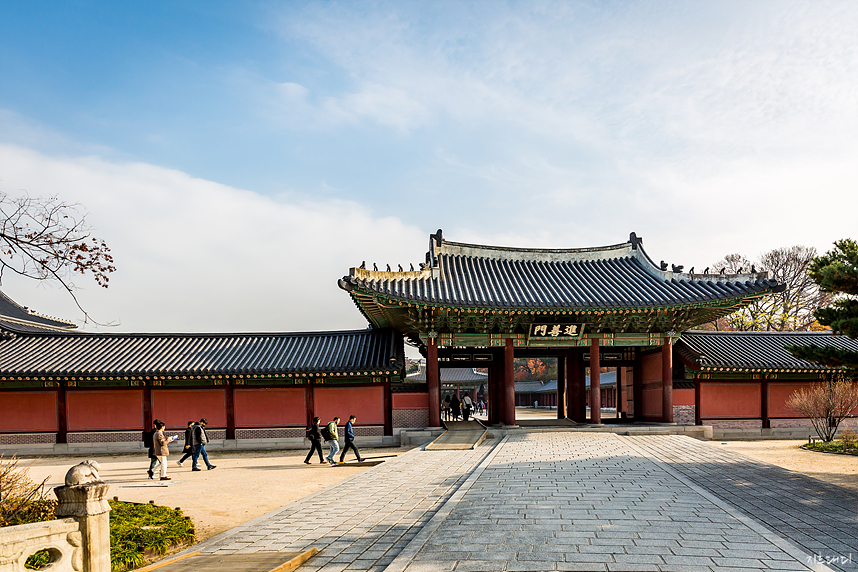
You can see Jinseonmun Gate in the distance. It means to raise the right words to the king of Jinseon, and it is said that it also means to do the right politics because it is the entrance to the realm of the royal palace where the king is located. It is said that during the reign of King Yeongjo, a newspaper store was installed here.
A stream called Geumcheon flows and a bridge called Geumcheongyo sits there.
offices in the palace
Before entering Jinseonmun Gate, if you look to the left, you will see Gwolnaegaksa Temple. Many buildings are gathered together to form a maze-like appearance.
Move the guide text.
offices in the palace
Several government offices directly related to the royal family were installed in the palace, and they were called the palace offices. Among them, Hongmungwan, which assisted with politics, Naeuiwon, which took care of health, Kyujanggak, which was in charge of spiritual culture, and Yemungwan, which kept royal decrees and letters, were the central facilities. Most of the buildings were destroyed during the Japanese colonial period and restored in 2005. The gold stream flowing through the middle was used as a boundary and a landscape element, and as various government offices were concentrated, it was composed in a maze-like complex.






After looking around the offices and passing through Jinseonmun Gate, you can see Injeongmun Gate leading to Injeongjeon Hall on the left. If other palaces have a structure that stretches all the way from the main gate to the main hall, Changdeokgung is unique in that you have to cross Geumcheongyo Bridge by turning 90 degrees at Donhwamun Gate and turn 90 degrees after entering Injeongmun Gate to reach the main hall.
The large two-story main hall seems to add to the dignity that this place has been the main palace for a long time. Unusually, the part where a lot of yellow is used in the exterior is also interesting.
I was curious about the yellow color of the exterior, so I looked it up and found out that when Emperor Sunjong moved to Changdeokgung Palace in 1908, some parts were remodeled in a Western style. do. You can still see this inside the main hall.
As mentioned earlier, Sunjongdae was partially renovated, so you can see Western-style lights and curtains installed inside the main hall.
The blue roof tile seen behind Injeongjeon Hall was used as the king's official office for Seonjeonjeon Hall.
When you exit Injeongjeon, you will see a selection gate right next to you.
Seonjeongjeon (宣政殿)
Seonjeongjeon is the palace's pyeonjeon (office space) where the king conducted daily business with high-ranking officials, and was built to the east of the main hall in line with the topography.
Various meetings were held every day, including morning coordination meetings, work reports, and state affairs seminars, contests. The surrounding quarters were used as secretary offices and warehouses, but overall they were cramped.
Seonjeongjeon Hall is characterized by the fact that it has blue roof tiles and connects each hallway to the Seonjeongmun Gate in front. Seonjeongjeon Hall was once used as a Honjeon Hall (a place to enshrine a sacred spirit), and the hallways are traces of that time.
The roof of Seonjeongjeon Hall is blue tile, which is said to be an expensive building material using Arabian blue pigment and Chinese technology. Yeonsangun tried to cover Injeongjeon with blue tiles, but was kicked out the following year by an anti-government, and Gwanghaegun also had to be criticized for being extravagant because of the blue tiles.
Huijeongdang, the king's office space that was originally used as a sleeping quarters but was changed to a pyeonjeon, is right next to it. It is said that the original Pyeonjeon, Seonjeongjeon, where the king spent most of his time, was cramped and often used as a Honjeon (a place to enshrine a divine spirit), so Huijeongdang, which was the sleeping quarters, took over the function of the Pyeonjeon.
Today's Huijeongdang was a small house with a pond built for several stone pillars drawn in "East Palace", but the current Huijeongdang is completely different. The reason is that Gangnyeongjeon, which was in Gyeongbokgung Palace, was moved and built while restoring what was destroyed by fire in 1917 in 1920.
Opposite Huijeongdang, there is a resting facility where you can drink coffee or buy souvenirs.
It's not coffee, but looking at it while drinking a drink, I can see Injeongjeon towering in the distance. In the Joseon Dynasty, when there were no tall buildings, I think that Injeongjeon could have been seen from afar.
Seonjeongjeon seen from the rest area, around Huijeongdang
Various souvenirs were sold, and pottery, especially tea cups, were quite desirable, but they were a bit overpriced. Is it a tourist attraction?
If you pass Huijeongdang and go up to go to the garden behind the palace, you will see Nakseonjae at a distance. In fact, this is a space where Nakseonjae, Seokbokheon, and Sugangjae are attached, and it is generally called Nakseonjae, including the pavilion at the back and Hanjeongdang, but in fact, it is a place where several different buildings are gathered.

Nakseonjae area
Nakseonjae is the king's study and sarangchae. When Heonjong and Queen Hyojeong had no children, he built Nakseonjae to the east of Junghuidang in 1947 when he welcomed Kim Jaecheong's daughter as his wife.
The following year, he built Seokbokheon and placed it alongside Sugangjae. Seokbokheon was the living space of Gyeongbin, and Sugangjae was the place where Queen Sunwon, who took care of affairs as an adult in the royal family on behalf of her young king, was enshrined.
According to King Heonjong's will, Nakseonjae has a simple appearance as it is not coated with dancheong, and as if reflecting the king's preference for foreign culture, the Qing Dynasty style can be seen in the grille pattern of Nakseonjae and the architectural style of Sangryangjeong.
The calligraphy of Nakseonjae's signboard is that of Seop Ji-seon, a literary figure of the Qing Dynasty, and there is the calligraphy of Weng Fang-gang, the teacher of Kim Jeong-hui, on the juryeon in front of the main hall.




There is also a Chinese-style gate, perhaps because of the taste of King Heonjong, who was said to have been interested in Qing Dynasty culture. Reading a book here on a spring or autumn day would be so relaxing and healing.
The buildings here exude elegance and beauty in their simplicity. In simple terms, did you get the feeling that it is a Hanok building that is elegant and elegant, but also has beauty inside it?
Here, in Seokbokheon, Queen Sunjeonghyo, wife of Sunjong, lived until 1966, and Lady Bangja, wife of King yongchin, and Princess Deokhye lived until 1989. It is said that Mrs. Lee Bang-ja and Princess Deokhye spent the rest of their lives relying on each other and comforting each other until they passed away ten days apart in 1989.
The impression of looking around Nakseonjae can be summarized as a really beautiful hanok, although I tried to give it a simple feeling without dancheong. I think this is what a hanok where the king's family or powerful people stay. When the time comes, I will also visit Unhyeon Palace, where Heungseon Daewongun is said to have stayed.
My impression of visiting Changdeokgung Palace is that Gyeongbokgung Palace, which I have seen before, is divided into a wide area in a straight line, while Changdeokgung Palace is built at the foot of a mountain in harmony with nature and topography. After visiting the Garden behind the palace , I thought I could understand why the kings of the Joseon Dynasty liked this place compared to Gyeongbokgung Palace.
In the next article, I will post a tour of Changdeokgung Palace's secret cause, Palace garden.



























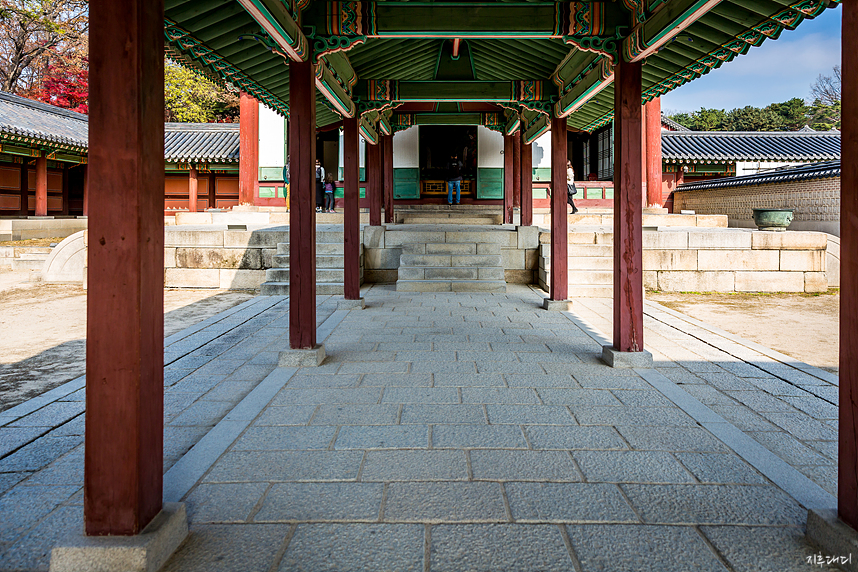

















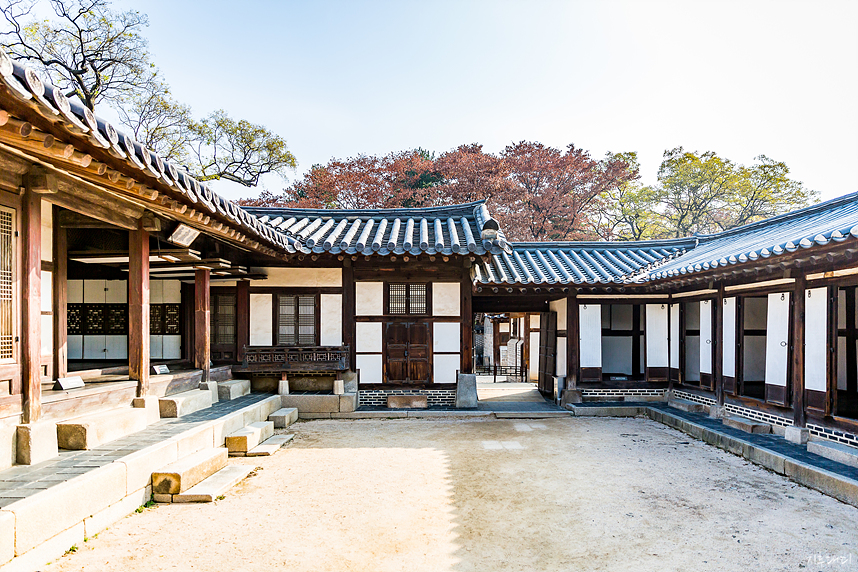

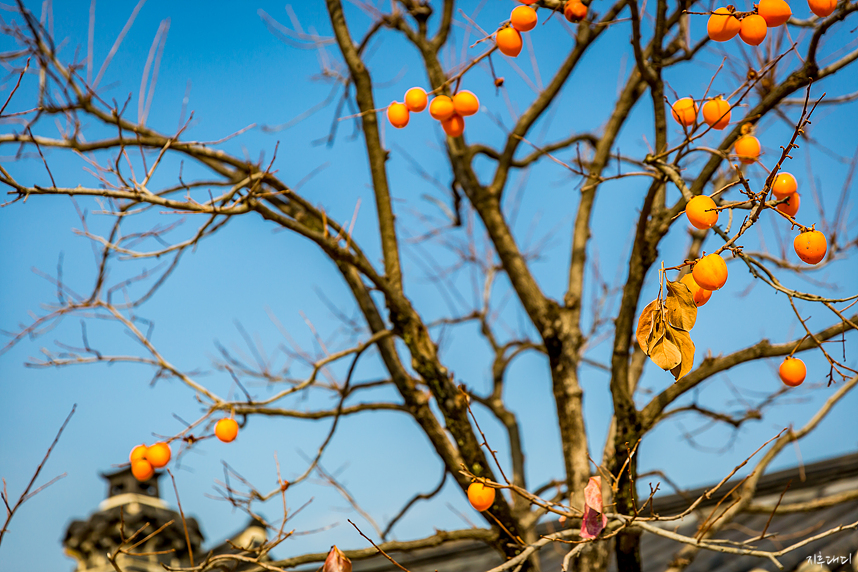

Comments
Post a Comment